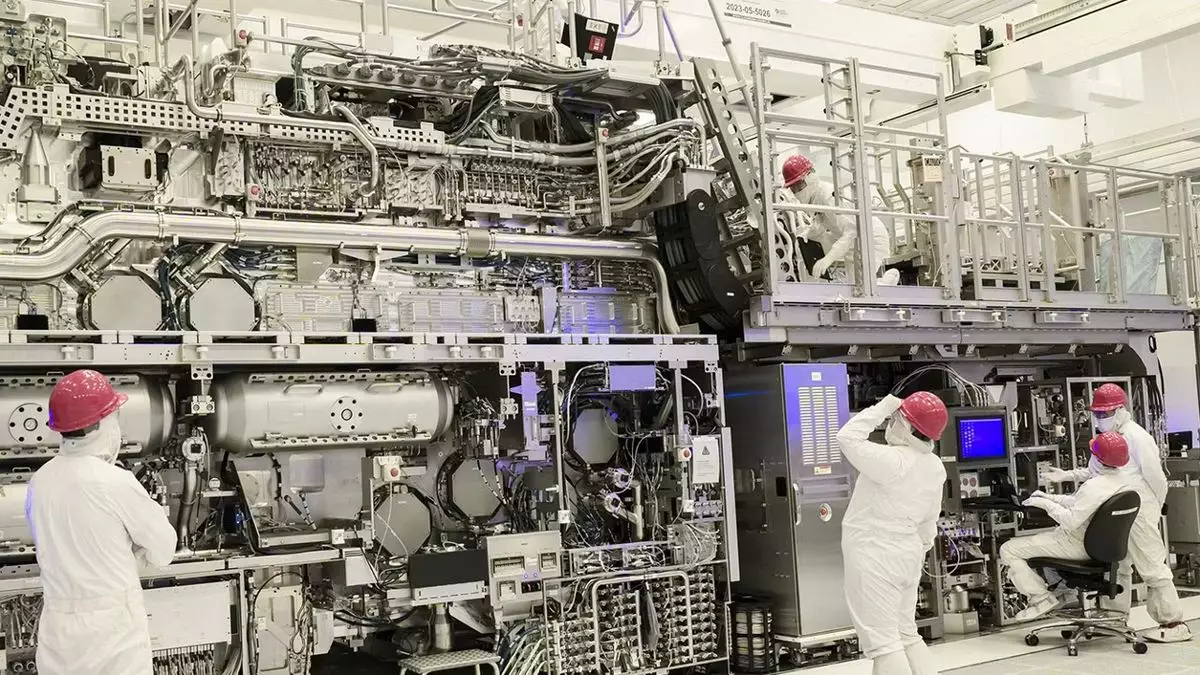As Intel transitions into the next chapter of its chip production journey, the announcement of the new 18A node marks a significant moment for the company and the broader semiconductor industry. However, understanding the implications of this advancement requires delving deeper than the headlines. While Intel boasts about the readiness of the 18A node, the real excitement and anxiety stem from its potential impact on future products and the competitive landscape.
The introduction of the 18A node is the final piece in Intel’s ambitious strategy known as “five nodes in four years” (5N4Y), which aimed to rejuvenate the company’s manufacturing processes after years of struggles. This bold strategy commenced with Intel 7, which was essentially a refinement of existing technology rather than a groundbreaking departure. The sequence continued with Intel 4 and Intel 3, both of which can be scrutinized for their innovation claims, leading to questions about how “new” these nodes truly are.
While Intel has positioned 18A more as a marketing victory, it is crucial to analyze whether this node can deliver on its potential. The skepticism arises from Intel’s own timeline for products that utilize 18A technology. Despite the early marketing, it seems that products like the Clearwater Forest server CPU have been delayed, projecting launch towards the first half of 2026. This timeline casts doubt on whether the 18A node is, in fact, ready for full-scale implementation or merely a showcase for potential future capabilities.
Intel’s competence in delivering competitive chips is critical as it stands against rivals like TSMC, the current kingpin of semiconductor fabrication. The claims regarding 18A—featuring improvements in performance per watt and chip density—are impressive. Specifically, Intel suggests that this new node is superior in power delivery and power efficiency compared to the existing iterations. Additionally, with features like PowerVia backside-power delivery technology and RibbonFET transistors, Intel could potentially shift the momentum back in its favor.
Yet, the pragmatic industry observer might rightly question: can these claims translate into real-world advantages? The reality is that while 18A may exhibit technological advancements, it must meet tangible customer demand and performance in a commercially viable timeframe to match TSMC’s established N2 and N3 nodes.
Intel’s competitive position is further complicated by reports indicating that while 18A may boast similar SRAM densities to TSMC’s N2, it might not outpace TSMC’s capabilities in other critical areas. This equivalency raises a crucial point; is Intel’s 18A genuinely a leap forward, or does it merely keep pace with TSMC’s advancements? For Intel to regain a stronghold in the market, they need to not only match but ideally outshine competitors regarding efficiency, performance, and production yield.
The implications of 18A are not just technical but extend to shareholders, customers, and even the end-users of PCs and laptops. As Intel heralds this innovation as a reason for renewed confidence, stakeholders must scrutinize whether this will translate to competitive prices and products. If Intel cannot deliver chips utilizing the 18A technology reliably, it may face further erosion of market confidence and stakeholder trust.
Moreover, given that Intel’s recent launches have been marred by delays, any further issues with 18A could be detrimental. The reference to timing in Gelsinger’s statement—claiming a bet on 18A—hints at the high stakes that the company has in successfully executing this technology. In a rapidly evolving market, the pressure for Intel to meet expectations is formidable; the ramifications of failing to deliver on the promise of 18A could lead to a tidal wave of repercussions across the industry.
With the semiconductor supply chain continually adapting to new challenges and opportunities, the arrival of Intel 18A represents more than just another manufacturing process—it signifies a pivotal moment in an industry in dire need of diversity in design and production capabilities. As competition serves as a stabilizing force, the industry’s health relies on multiple players thriving.
Consumers stand to benefit from the resulting competition, which could drive innovation in PC performance, pricing, and accessibility. For the industry’s future, it is less about whether 18A is ready now and more about sustaining momentum. As investment continues and technological advancements are made, the semiconductor landscape will ultimately shape the experience of technology users everywhere.
In sum, 18A may indeed prove a critical inflection point for Intel, but for now, it remains a balancing act between promise, performance, and the realities of market competition. The coming years will be crucial in determining whether Intel rises to the occasion or returns to its struggles.

